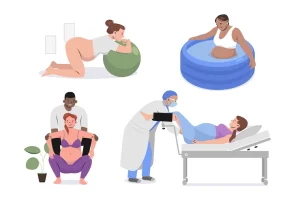How to Recognize Vision Problems in Your Child

August is Children’s Eye Health and Safety Month and a good time to make sure you’re caught up with your child’s eye care. Eye exams for children begin at birth, right in the delivery room when a nurse puts erythromycin ointment (an antibiotic) into the eyes to prevent infection. It continues in the nursery when a pediatrician looks for redness, discharge, abnormalities of the eye and orbit, and checks for the red reflex.
After that, a doctor will examine vision problems in your child’s eyes at each well-child exam. By age five, children will have the vision in each eye screened at each good exam. If necessary, the doctor will send them to an eye doctor, known as an ophthalmologist, for a more formal evaluation.
Eye protection is important for many reasons. Wearing a hat with a brim when outdoors helps shade the eye as well as the delicate skin around the eye from harmful UVA and UVB rays. Ultraviolet rays can lead to cancers of the eye and skin and accelerate the development of age-related diseases such as macular degeneration and the development of cataracts later in life.
Wearing sunglasses beginning in infancy and continuing over a lifetime is the next step in protecting the eyes and skin from these age-related diseases. Wearing protective lenses when playing sports becomes important when children are older and participate in high-risk sports.
Parents are the key to helping maintain good eye health in their children. Unlike doctors, who have seconds to examine the eyes, parents have the time to notice subtle changes such as when the eyes do not appear in alignment or that a child is constantly rubbing their eyes.
Parents are often the first to notice the symptoms of a childhood ocular cancer called retinoblastoma, which is characterized by a white reflex inside one of the pupils. They also notice when eyes are crusty, draining pus, or seem uncomfortable. Parents also have the opportunity to be good role models for their children, wearing sunglasses and hats when playing outside.
Powered by Bundoo®










